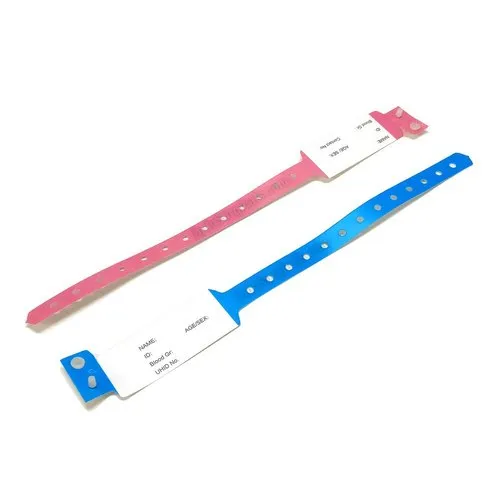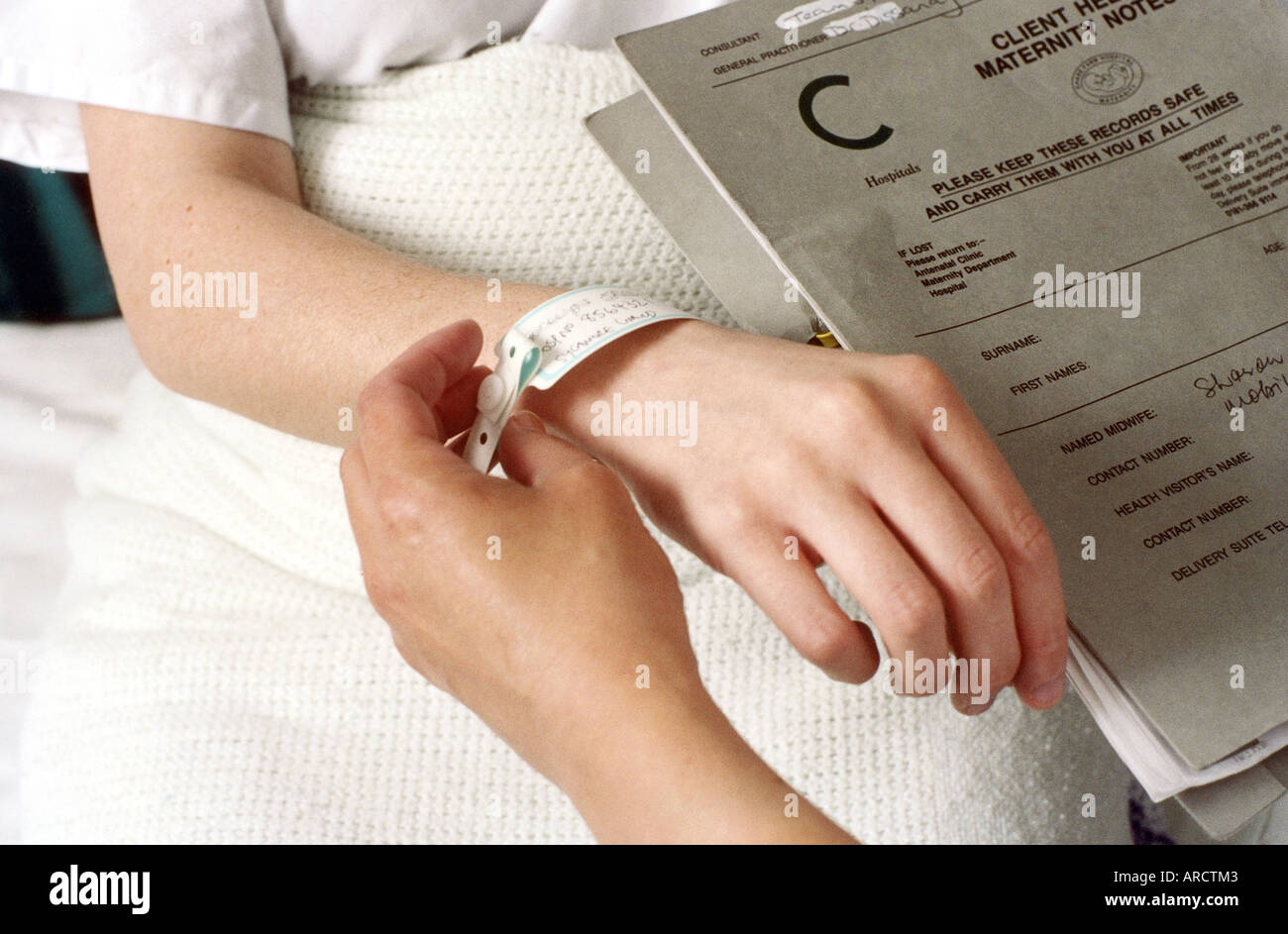Patient Identification Band: A Necessary Tool for Every Doctor
Patient Identification Band: A Necessary Tool for Every Doctor
Blog Article
Enhancing Safety And Security: The Significance of Client Recognition Bands in Healthcare
In the realm of health care, the efficacy of client recognition bands can not be overstated, as they offer as a basic protect against misidentification and succeeding mistakes. As we check out the multifaceted role of these bands, it becomes evident that their value prolongs past mere recognition, elevating questions about ideal techniques and future technologies in person safety and security.
Review of Individual Recognition Bands
Individual identification bands play an essential role in guaranteeing the safety and precision of individual care in health care settings. These bands, typically endured the wrist or ankle joint, function as a critical device for confirming patient identification, consequently reducing the threat of mistakes in treatment, drug administration, and various other health care procedures. Made from sturdy materials, patient recognition bands frequently consist of vital information such as the person's name, date of birth, clinical record number, and barcodes or QR codes for scanning.
The execution of individual recognition bands is crucial in various medical care atmospheres, consisting of healthcare facilities, outpatient facilities, and long-lasting care establishments. They add to a methodical strategy in client monitoring, enabling health care experts to swiftly and accurately determine patients, specifically in high-pressure circumstances where speedy decision-making is vital.
Moreover, using these bands is lined up with governing criteria intended at enhancing patient security - Patient Identification Band. By making certain that each patient's information is readily available and quickly verifiable, doctor can maintain a high standard of care, reduce the incidence of adverse occasions, and foster a society of safety and security within medical care institutions
Advantages of Accurate Recognition
Exact recognition is basic to boosting person safety and security and care top quality in health care setups. It works as the very first line of defense against errors that can cause negative client results. By making sure that each individual is properly determined through reliable methods, such as individual identification bands, healthcare service providers can significantly decrease the threat of misidentification, which can result in unacceptable treatments, medication mistakes, and even medical mix-ups.
Additionally, accurate person identification facilitates efficient communication amongst healthcare groups. When all personnel participants can constantly identify clients, they can share crucial details much more successfully, causing better sychronisation of treatment. This is especially vital in emergency scenarios where timely treatments are crucial.
Furthermore, accurate identification sustains compliance with regulative criteria, thereby minimizing the risk of legal effects for healthcare facilities. It cultivates trust between people and doctor, as people feel more protected understanding that their identifications are being safeguarded.

Common Obstacles Dealt With
Guaranteeing effective individual identification in medical care settings presents a series of challenges that can endanger security and care top quality. One considerable challenge is the irregularity in patient populaces. Patients might arrive in a state next of complication or distress, making accurate recognition difficult. Furthermore, language obstacles can impede reliable communication, making complex the verification process.
One more obstacle is the reliance on human consider recognition treatments. Healthcare experts might accidentally overlook or misinterpret identification protocols, especially in high-stress atmospheres such as emergency situation divisions. This can lead to errors, including the administration of inaccurate therapies or drugs.
Technical issues also position difficulties. Although digital wellness record (EHR) systems are developed to improve individual recognition, system blackouts or user errors can disrupt the process. Furthermore, the physical design of patient ID bands can lead to readability issues, especially in instances where bands are harmed or covered.
Finally, inconsistent training among staff regarding recognition procedures can lead to gaps in knowledge and technique. Resolving these difficulties is vital for improving client safety and making certain that recognition bands serve their designated purpose effectively.
Ideal Practices for Implementation
To effectively implement patient identification bands in medical care setups, companies need to embrace a complex technique that prioritizes training, modern technology, and standardization assimilation. Standardization involves developing clear protocols for the layout, application, and use recognition bands across all divisions. This guarantees uniformity and minimizes the threat of errors connected to variances in band types or classifying techniques.


Training is necessary for all health care staff to guarantee they comprehend the importance of exact individual identification, just how to appropriately apply and review recognition bands, and the procedures to adhere to in situation of discrepancies. Normal workshops and correspondence course can strengthen this expertise and promote a society of security.
Modern technology combination plays a critical duty in enhancing the performance of client recognition bands. Using barcode scanning or RFID modern technology can simplify the identification procedure, permitting real-time confirmation of client identifications. Web Site Furthermore, electronic health and wellness document systems must be configured to consist of notifies for inequalities in between the identification band and individual data.
Future Trends in Individual Safety And Security
As health care proceeds to develop, the emphasis on person security is most likely to escalate, driven by developments in modern technology and a greater understanding of systemic dangers. Arising fads show a shift towards more integrated systems that take advantage of information analytics, artificial intelligence, and artificial intelligence to boost patient identification processes. These innovations can aid recognize potential safety problems before they intensify, consequently lowering mistakes related to misidentification.
Moreover, the implementation of blockchain technology may transform exactly how patient data is safely shared among doctor, ensuring that recognition bands are consistently exact and current. This will certainly not just improve client safety but also facilitate seamless interaction throughout multidisciplinary groups.

Additionally, the growing emphasis on tailored medicine is expected to influence patient safety and security methods. By including hereditary and group details right into identification systems, healthcare experts can tailor therapies extra effectively, reducing the dangers of negative responses because of misidentification.
Verdict
In verdict, individual identification bands offer as a crucial component in enhancing safety and security within health care environments. Inevitably, the continued focus on durable identification methods will add to enhanced patient end results and general safety and security in health care settings.
In the world of healthcare, my website the efficiency of individual identification bands can not be overemphasized, as they serve as an essential safeguard versus misidentification and subsequent mistakes.Patient recognition bands play an important role in making sure the safety and precision of patient treatment in healthcare settings. Made from sturdy materials, person identification bands commonly include necessary information such as the person's name, date of birth, medical document number, and barcodes or QR codes for scanning.
By ensuring that each person is properly determined via dependable methods, such as patient identification bands, medical care service providers can dramatically minimize the danger of misidentification, which can lead to improper therapies, medication errors, and even medical mix-ups.
In verdict, patient identification bands serve as a crucial part in boosting safety within health care atmospheres. Patient Identification Band.
Report this page